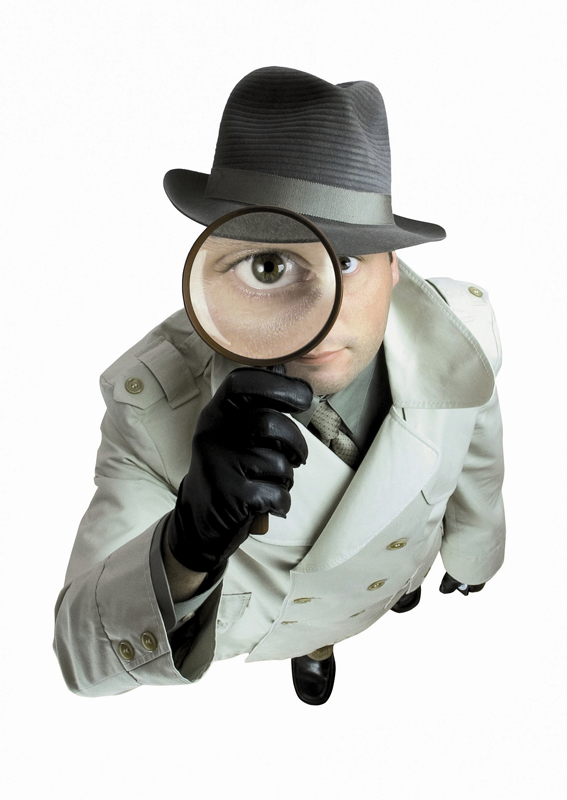Originally posted in the Santa Barbara Review
written by Loretta Redd PhD 9/10/2013
A few months ago I received my monthly bill from Southern California Edison, and noted with equal parts suspicion and delight that the amount owed was $0.00.
Curiosity led me to check my newly installed Smart Meter which displayed a message among the flashing, repeating numbers: ”FAT ERROR.”
I didn’t know whether the error was overweight or Edison was now monitoring my caloric intake via its microwave technology, but if it resulted in free power while my lights still functioned normally, who was I to call and report it? After all, they were the ones who insisted all this fail-safe, energy saving transmission be done without two-legged “meter readers.”
Today, a young technician in an Edison van came to my door, stating that my meter had to be replaced due to a “fatal error” message, resulting in the loss of transmission capability since June 26th. That explained the zero sum billing, but I was curious as to what might have caused the Smart Meter to dumb down after installation.
His reply was refreshingly forthcoming. Actually innocent in a way, because none of the upper level management at Edison, the Public Utilities Commission or the manufacturer whom I contacted admitted to knowing anything about the Smart Meters failure rate.
The technician went on to disclose, “These meters are failing left and right. In fact, they’ve brought me and four of my buddies in from Indio to help with the replacement.”
“Really?” I noted with curiosity, sensing a story brewing, “And why do you think they’re failing?”
“Not sure,” he replied, “but they’re made by Landis + Gyr, which is a pretty good company; only these E130 FOCUS meters were all manufactured in Mexico.” He explained that the failures were a result of spikes in the readings. “Rather than a consistent pattern of 3, 6, 4, 6, 3, 7,” he said, “there would be a sudden spike of something like 22,000, so then an error message is transmitted to the main frame.”
After hooking some wire connectors to his laptop computer, he replaced the meter ‘face’ with one made by Itron, which interestingly had a prominent “USA” stamped on the front label. After the technician departed, I started a Google search for information and began calling around the black hole of gargantuan corporations to find someone willing to discuss this problem.
The Public Relations officers from neither Landis +Gyr nor from Itron returned my inquiry. But my computer search uncovered that Landis + Gyr has produced over 300 million meters in over thirty countries, employs over 5,000 people and has sales of $1.5 billion. They indeed have a “manufacturing high volume” plant in Reynosa, Tamaulipas, Mexico.
On the Itron website, interestingly, they heralded the joining of Itron with Landis + Gyr for “Product Integration Projects” such as the “Data Unification and Synchronization System,” which connects the communication technology of Landis with the systems analysis of Itron. Titans of industry joining forces for a global installation of new energy data-transmitting systems…
and we thought the NSA was big.
Indeed, when I checked the meter of a friend in Goleta, I found the Itron symbol at the top, and the Landis + Gyr at the bottom. It wasn’t labeled “USA,” so I’m not sure of its manufacturing origin, but hopefully it won’t suffer from the Mexican meltdown problem or Fatal Error disruption apparently plaguing our area.
I use the term “meltdown,” because in my research, I came across not only the usual conspiracy articles on Smart Meters’ electromagnetic fields frying our brains and resetting our pacemakers, but an entirely different problem in Pennsylvania (PECO Energy,) where overheating and melting had occurred as a suspected result of arcing and spiking. To my dismay, these were SENSUS meters, made by General Electric, and their installation had been stopped in 2012 while they replaced 1.6 million residential and commercial meters.
Whoa. Now we’ve got non-transmission for months at a time, and potential for fire as well??
I was relieved and pleasantly surprised when, by the end of the day, representatives from both the California PUC and SoCal Edison had returned my calls.
Ironically, I received my electric bill in the mail while waiting for those calls.
Total amount due: $84.41. On page 1 of my 10-page Edison bill, the “Summary of your billing detail” included the two prior months of meter readings in the amounts of $42.49 and $41.92.
Oh well, so much for “free” electricity…but how would they possibly know the number of kilowatt hours I had used, if in fact the meter had not been functioning since June 26th? While Mr. Miller from the PUC insisted that the front page of the bill clearly stated this was an “estimate,” I insisted otherwise, and read him the text verbatim.
Finally, on page 5 of 10, in small italic type, the word “estimated” appeared for the first and only time. The estimated amount owed for each month, according to Mr. Miller, was based on prior years’ use. If you are a new owner, I’m not quite sure what they use as a baseline.
I thought it was weird that the two months’ estimates would be close but still different, even when SoCal Edison was completely guessing the kilowatt hours I would have used. In fact, I was out of my home for most of July…but without transmission of electrical data, how on earth could I ever prove a lower usage?
Indeed, how can the consumer challenge the amount owed, or verify any of this data anymore?
I would suggest we pay closer attention to the “new technology” which was purported to be a “self-management tool” for us in energy usage and conservation. I hope my life is never so boring as to have sufficient time to go “online” and monitor my electrical usage, but I admit that I’m more inclined now than ever.
What really troubles me is that The Gas Company slipped an announcement into last month’s billing that they, too, would soon be attaching “smart meter” technology to their existing system. I haven’t inquired about the risks of “spiking” with pressurized gas lines, but it could just give “fatal error” a whole new meaning.



